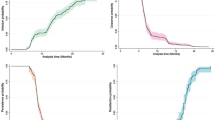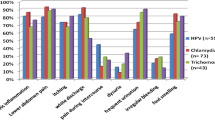Abstract
CD14, a pattern recognition receptor on monocyte and macrophage, plays a central role in innate immunity through recognition of bacterial lipopolysaccharide and initiation of inflammatory response. Recently, CD14/−260C>T promoter gene polymorphism has been found to be related to a risk of inflammatory diseases. Our results showed that the C allele frequency among Chinese in Taiwan was lower than those in Western countries. The membrane CD14 expression was significantly higher in TT as compared with CT and CC genotypes (P=0.034, 0.044, respectively). There was a higher level of soluble CD14 in TT and CT genotypes than in CC genotypes. In addition, TNFα production in whole blood was significantly higher in TT genotype than in CC genotype after stimulation by Chlamydiae. In conclusion, the single base pair polymorphism of CD14 promoter gene is associated with CD14 expression and Chlamydia-stimulated TNFα production, and may thus play some role in the chlamydia-induced inflammatory response.
This is a preview of subscription content, access via your institution
Access options
Subscribe to this journal
Receive 6 digital issues and online access to articles
$119.00 per year
only $19.83 per issue
Buy this article
- Purchase on Springer Link
- Instant access to full article PDF
Prices may be subject to local taxes which are calculated during checkout



Similar content being viewed by others
References
Wright SD, Ramos RA, Tobias PS, Ulevitch RJ, Mathison JC . CD14, a receptor for complexes of lipopolysaccharide (LPS) and LPS binding protein. Science 1990; 249: 1431–1433.
Bazil V, Baudys M, Hilgert I et al. Structural relationship between the soluble and membrane-bound forms of human monocyte surface glycoprotein CD14. Mol Immunol 1989; 26: 657–662.
Durieux JJ, Vita N, Popescu O et al. The two soluble forms of the lipopolysaccharide receptor, CD14: characterization and release by normal human momocyte. Eur J Immunol 1994; 24: 2006–2012.
da Silva Correia J, Soldau K, Christen U, Tobias PS, Ulevitch RJ . Lipopolysaccharide is in close proximity to each of the proteins in its membrane receptor complex: transfer from CD14 to TLR4 and MD-2. J Biol Chem 2001; 276: 21129–21135.
Wright SD . CD14 and innate recognition of bacteria. J Immunol 1995; 155: 6–8.
Ulevitch RJ, Tobias PS . Recognition of Gram-negative bacteria and endotoxin by the innate immune system. Curr Opin Immunol 1999; 11: 19–22.
LeVan TD, Bloom JW, Bailey TJ et al. A common single nucleotide polymorphism in the CD14 promoter decreases the affinity of Sp protein binding and enhance transcriptional activity. J Immunol 2001; 167: 5838–5844.
Hubacek JA, Rothe G, Pit'ha J et al. C(−260) → T polymorphism in the promoter of the CD14 monocyte receptor gene as a risk factor for myocardial infarction. Circulation 1999; 99: 3218–3220.
Unkelbach K, Gardemann A, Kostrzewa M et al. A new promoter polymorphism in the gene of lipopolysaccharide receptor CD14 is associated with expired myocardial infarction in patients with low atherosclerotic risk profile. Arterioscler Thromb Vasc Biol 1999; 19: 932–938.
Eng HL, Chen CH, Kuo CC, Wu JS, Wang CH, Lin TM . Association of CD14 gene promotor polymorphism and Chlamydia pneumoniae infection. J Infect Dis 2003; 188: 90–97.
Bauriedel G, Welsch U, Likungu JA, Welz A, Luderitz B . Chlamydia pneumoniae in coronary plaques: increased detection with acute coronary syndrome. Dtsch Med Wochensch 1999; 124: 375–380.
Rothermel CD, Schachter J, Lavrich P, Lipsitz EC, Francus T . Chlamydia trachomatis-induced production of interleukin-1 by human monocytes. Infect Immun 1989; 57: 2705–2711.
Williams DM, Magee DM, Bonewald L et al. A role in vivo for tumor necrosis factor alpha in host defense against Chlamydia trachomatis. Infect Immun 1990; 58: 1572–1576.
Louis E, Franchimont D, Piron A et al. Tumor necrosis factor (TNF) gene polymorphism influences TNF-α production in lipopolysaccharide (LPS)-stimulated whole blood culture in health human. Clin Exp Immunol 1998; 113: 401–406.
Zee RY, Lindpaintner K, Struk B, Hennekens CH, Ridker PM . A prospective evaluation of CD14(−260) T gene polymorphism and the risk of myocardial infarction. Atherosclerosis 2001; 154: 699–702.
Karhukorpi J, Yan Y, Niemela S et al. Effect of CD14 promoter polymorphism and H pylori infection and its clinical outcomes on clinical CD14. Clin Exp Immunol 2002; 128: 326–332.
Baldini M, Lohman IC, Halonen M et al. A polymorphism in the 5′ flanking region of the CD14 gene is associated with circulating soluble CD14 levels and with total serum immunoglobulin E. Am J Respir Cell Mol Biol 1999; 20: 976–983.
Ito D, Murata M, Tanahashi N et al. Polymorphism in the promoter of lipopolysaccharide receptor CD14 and ischemic cerebrovascular disease. Stroke 2000; 31: 2661–2664.
Heesen M, Blomeke B, Schluter B, Heussen N, Rossaint R, Kunz D . Lack of association between the −260C → T promoter polymorphism of the endotoxin receptor CD14 gene and the CD14 density of unstimulated human monocytes and soluble CD14 plasma levels. Intensive Care Med 2001; 27: 1770–1775.
Temple SE, Cheong KY, Almeida CM, Price P, Waterer GW . Polymorphisms in lymphotoxin alpha and CD14 influence TNFα production induced by Gram-positive and Gram-negative bacteria. Gene Immun 2003; 4: 283–288.
Van der Linden MW, Huizinga TW, Stoeken DJ, Sturk A, Westendorp RG . Determination of tumor necrosis factor-alpha and interleukin-10 production in a whole blood stimulation system: assessment of laboratory error and individual variation. J Immunol Methods 1998; 218: 63–71.
Jones J, Schachter MJ, Stephens RS . Evaluation of the humoral immune response in trachoma to Chlamydia trachomatis major outer membrane proteins by sequence-defined immunoassay. J Infect Dis 1992; 166: 915–919.
Brade L, Brunnemann H, Ernst M et al. Occurrence of antibodies against chlamydial lipopolysaccharide in human sera measured by ELISA using an artificial glycoconjugated antigen, FEMS. Immunol Med Microbiol 1994; 8: 27–42.
Morrison RP, Su H, Lyng K, Yuan Y . The Chlamydia trachomatis hyp operon is homologous to the groE stress response operon of Escherichia coli. Infect Immun 1990; 58: 2701–2705.
Netea MG, Selzman CH, Kullberg BJ et al. Acellar components of Chlamydia pneumoniae stimulate cytokine production in human blood mononuclear cells. Eur J Immunol 2000; 30: 541–549.
LaVerda D, Kalayoglu MV, Byme GI . Chlamydial heat shock proteins and disease pathology: new paradigms for old problems? Infect Dis Obstet Gynecol 1999; 7: 64–71.
Kol A, Lichtman AH, Finberg RW, Libby P, Kurt-Jones EA . Heat shock protein (HSP)60 activates the innate immune response:CD14 is an essential receptor for HSP60 activation of mononuclear cells. J Immun 2000; 164: 13–17.
Bulut Y, Faure E, Thomas L et al. Chlamydial heat shock protein 60 activates macrophages and endothelial cells through Toll-like receptor 4 and MD2 in MyD88-dependent pathway. J Immunol 2002; 168: 1435–1440.
Acknowledgements
We express our thanks to Ms Yuan-Jen Huang and Ms Chin-Fang Tsai for their technical assistance. This study was supported by grants NSC89-2314B-182A-056 from the National Science Council, CMRPG8055 from Chang Gung University and Memorial Hospital, and MOE program for Promoting Academic Excellent of University under the Grant Number 91-B-FA09-2-4 from Ministry of Education, Taiwan, Republic of China.
Author information
Authors and Affiliations
Corresponding author
Additional information
This study was presented in part as a poster (P036) at the 22nd World Congress of Pathology and Laboratory Medicine, August 2003, Busan, Korea. Informed consent was obtained from participants, and the study was approved by the National Cheng Kung University Hospital Research Ethics Committee.
Rights and permissions
About this article
Cite this article
Eng, H., Wang, C., Chen, C. et al. A CD14 promoter polymorphism is associated with CD14 expression and Chlamydia-stimulated TNFα production. Genes Immun 5, 426–430 (2004). https://doi.org/10.1038/sj.gene.6364100
Received:
Revised:
Accepted:
Published:
Issue Date:
DOI: https://doi.org/10.1038/sj.gene.6364100
Keywords
This article is cited by
-
Role of TLR4 (C1196T) and CD14 (C-260T) Polymorphisms in Development of Ischemic Stroke, Its Subtypes and Hemorrhagic Stroke
Journal of Molecular Neuroscience (2017)
-
The CD14 C-260T single nucleotide polymorphism (SNP) modulates monocyte/macrophage activation in treated HIV-infected individuals
Journal of Translational Medicine (2015)



